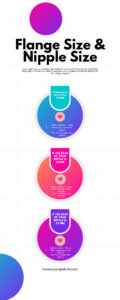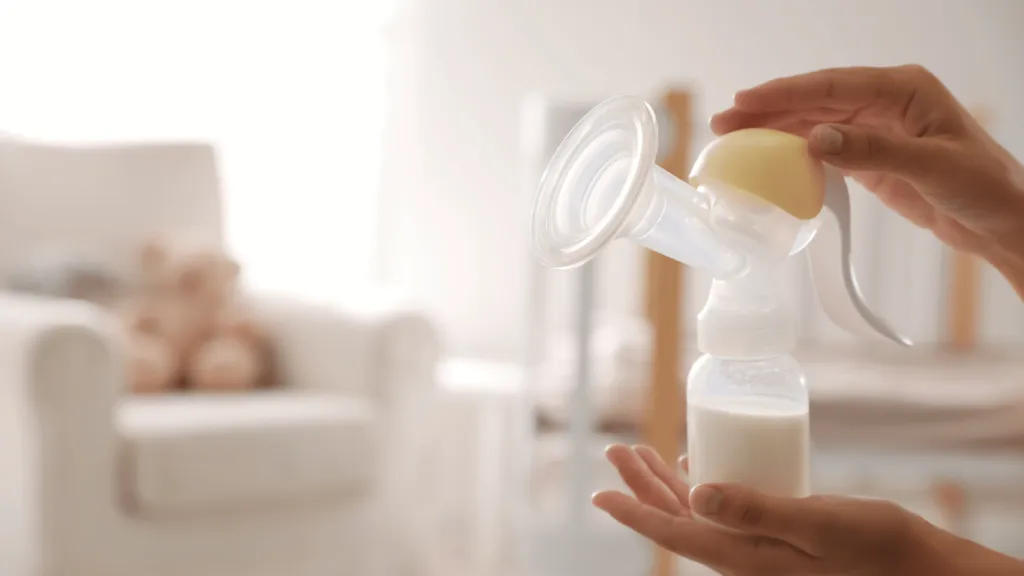Believe it or not, a big part of achieving optimal milk expression lies in something as simple as the right flange size. Using a flange that’s too small can cause pain and limit milk flow, while one that’s too big can be uncomfortable and lead to inefficiency. But how do you know which size is perfect for you? The answer lies in measuring your nipples! This flange size guide will show you exactly how to measure nipple for flange size, giving you the information you need to find your perfect fit.
What is a Flange?
A flange is the funnel-shaped part of your breast pump that fits over your breast during pumping sessions. It creates a seal around your nipple and areola (the darker pigmented area around your nipple) to stimulate milk production and expression. The flange size directly impacts how well your nipple fits inside the tunnel, affecting comfort, efficiency, and overall milk output.
Step-by-Step Guide: Measuring Your Nipples for Flange Size
- Gather your tools: You’ll need a ruler or a soft, flexible measuring tape with millimeters (mm) markings.
- Find the sweet spot: Locate the base of your nipple, where it meets the darker colored area around it (the areola). Don’t include the areola in your measurement. Read more about the nipple size and the measurement area in the below picture.
- Measure with precision: Gently hold the ruler or tape measure at the base of your nipple and record the diameter in millimeters. It’s best to measure both nipples as they can sometimes differ slightly in size.
- Account for expansion: Since your nipples will naturally expand during pumping, add 4 millimeters to your initial measurement. For example, if your nipple measures 18 mm, a comfortable flange size for you would likely be 22 mm.

What size flange for a 13mm nipple?
Following the 4mm rule, a comfortable flange size for a 13mm nipple would likely be around 17mm. However, this is just an estimate. It’s crucial to measure your own nipples for the most accurate fit.
How to Measure Flange Size with Inverted Nipples
Measuring inverted nipples can be a bit trickier. Here’s what you can do:
- Gently stimulate the nipple to encourage it to protrude slightly.
- If it doesn’t protrude enough for an accurate measurement, take a measurement of the widest part of the areola.
- Consult a lactation consultant for a personalized flange fitting, especially if you have very inverted nipples.
Flange Size Chart
The below table provides a general guideline to help you find the recommended flange size based on your nipple measurement. You can also calculate your flange size using our Flange Size Calculator. Remember, this is a starting point, and individual anatomy can vary. It’s always recommended to consult a lactation consultant for a personalized flange fitting, especially if you experience any discomfort while pumping. Here is a Flange size chart for your nipples;
| Nipple Size (mm) | Recommended Flange Size (mm) |
| 15 | 19 |
| 17 | 21 |
| 20 | 24 |
| 23 | 27 |
| 25 | 28 |
| 28 | 32 |
| 30 | 33 |
| 32 | 36 |
+4mm rule: Add 4 millimeters to your nipple measurement to account for expansion during pumping.
Is there a formula for flange size?
While the 4mm rule provides a good starting point, it’s not a perfect formula. Flange size can also depend on factors like nipple elasticity and breast tissue firmness. Consulting a lactation consultant can help you determine the ideal size based on your individual anatomy.

Even with proper flange size, achieving optimal comfort and milk flow can depend on your breast pump’s technology. Consider exploring pumps known for their gentle suction and personalized settings, like the Spectra S1, the Elvie Pump for hands-free pumping, the innovative in-bra Willow Pump, or the trusted performance of Medela pumps. Remember, a lactation consultant can also offer valuable guidance on flange selection and pump choice for your specific needs.
Key Takeaways—How To Measure Nipple For Flange Size?
By following these simple steps and using the handy 4 mm rule, you can easily determine the ideal flange size for your breast pump. Remember, a well-fitting flange is crucial for a comfortable and productive pumping experience. If you’re still unsure about the perfect size or experience any discomfort while pumping, don’t hesitate to consult a lactation consultant for personalized guidance.
Related:
- How To Store Breast Milk?
- How Often To Pump Milk?
- Drinks To Increase Milk Supply
- Power Pumping: A Definitive Guide

